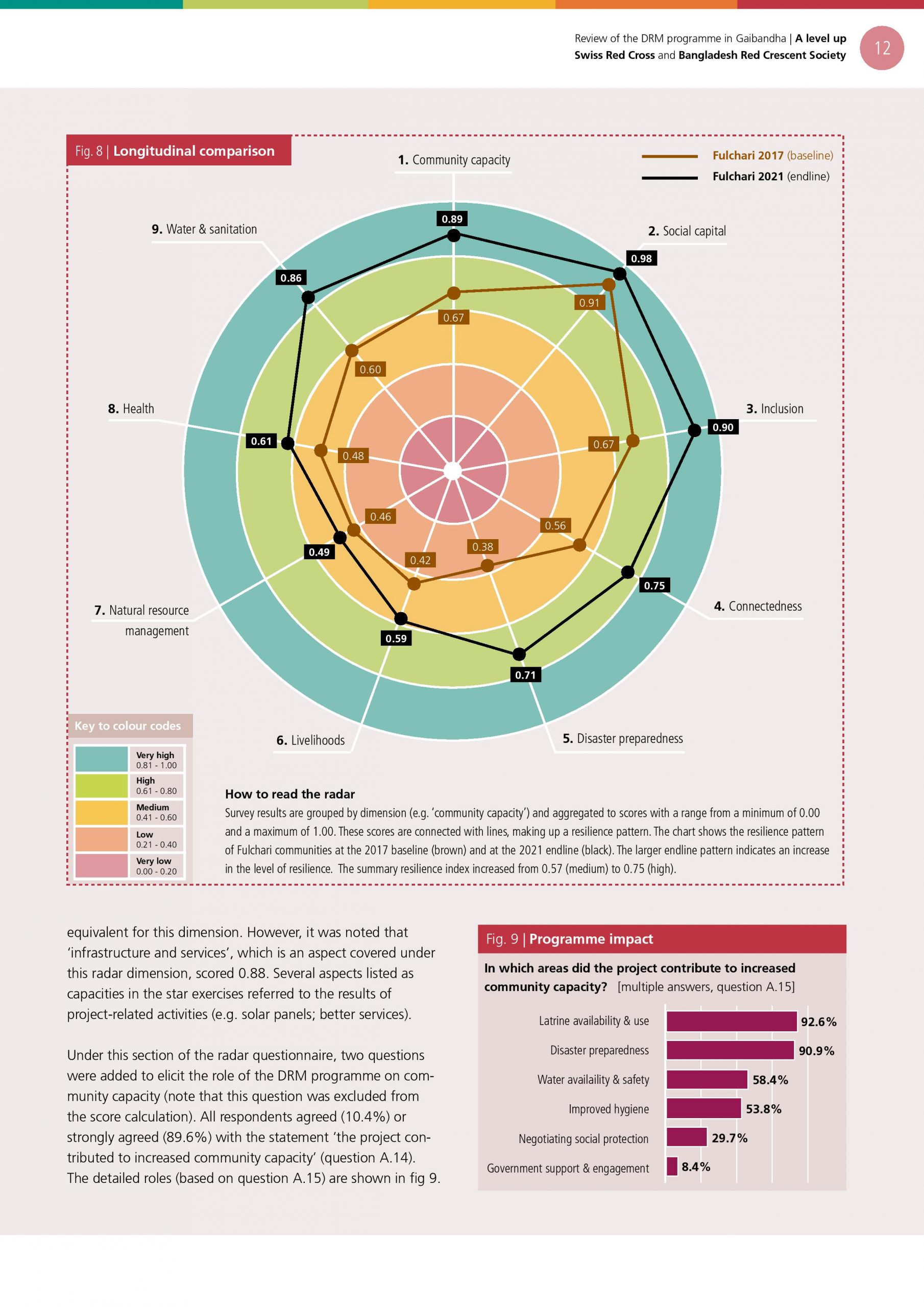A level up. Review of the disaster risk management programme and needs assessment in Gaibandha district, Bangladesh

Can we measure community resilience as part of base- and endline surveys? Yes, we can — and it’s not even that hard. This new report for Swiss Red Cross (SRC) is the based on a global first: the first application of resilience radar and resilience star as part of a longitudinal comparison.
Its findings are impressive: the review of a four-year disaster risk management (DRM) programme by SRC and Bangladesh Red Crescent Society (BDRCS) in Bangladesh’s north-western district of Gaibandha shows that flood-prone communities have moved ‘a level up’.
On the resilience radar, the overall resilience score increased from a medium-level 0.57 in 2017 to a high-level score of 0.75 in 2021. Major improvements were observed in disaster preparedness (+86.8%), water & sanitation (+43.8%) and connectedness (+34.5%).
The results highlight the effectiveness of the DRM programme: with robust needs assessments, close relationships of trust with communities, and a strong concept to better link communities with authorities and government agencies, the project team succeeded in elevating resilience. The report highlights numerous technical achievements, such as the making latrine coverage (99.2%, up from 56.1%) and the reach of early warning systems (97.5%, up from 61.1%) almost universal.
Considering implications for wider resilience programming, the team’s approach to connectedness is particularly strong: it successfully promoted participation in democratic engagement processes as well as the utilisation of government social safety nets (recipients of benefits more than doubled). Institutionally, it improved both vertical and horizontal linkages – demonstrating promising potential of a broader role of Red Cross/Red Crescent branches in accompanying, connecting and enabling communities towards raised resilience.
